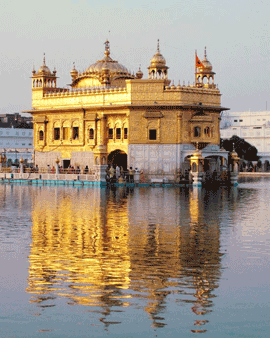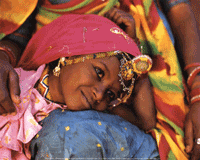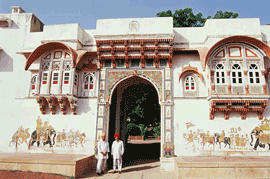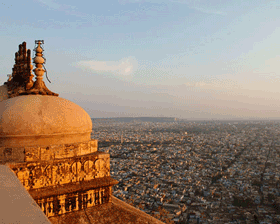One aspect of trip preparation that many people often skip is researching the cultural and social norms of the country you plan to visit. Being prepared by knowing the appropriate dress, gestures, and phrases will go a long way in making your trip more enjoyable. Making an effort to learn the cultural practices will be very appreciated by the locals and will give them a positive image of travelers. Here we’ll discuss responsible travel for India tours.

Plan Your Perfect Trip
Hindi is the official language of India, as decided by the central government. However, the different states of India have many different languages. For example, Bihar in east India has three official languages which are Hindi, Urdu and Bengali.
Here are a few phrases in Hindi you might find helpful when traveling to India:
- Hello/Goodbye: namaste
- Excuse me: maaf kijiyeh
- Please: meharbani she
- Thank you: shukriya
- Yes: haan
- No: nahin
- How are you?: aap kiaseh hain?
English is also widely used in India. Indian English differs as you travel to different parts of the country.
Culture

Indian culture emphasizes hierarchical relationships. Status is very important in their society and all relationships involve some kind of hierarchy. For example, schools teachers are well respected and seen as the source of all knowledge, the father is the head and leader of the family and the boss is also very well respected and has all authority in business. The culture emphasizes a group orientation meaning family is very important.
 The hierarchical structure of society greatly influences greetings. Religion, education and social class all play a major role in greeting someone in India. Saying namaste while the palms are held together at the chest level is the most popular form of greeting, particularly among elders. It is also used to say goodbye. As in many cultures, the eldest person should be greeted first. Men may greet men with handshakes, and women may greet women with handshakes but, it is still rare for men and women to shake hands because of religious beliefs. Additionally, when leaving a group it is customary to say goodbye to each individual not the group as a whole. Indians do not like to say no. They do not like to give negative answers, so instead they will offer an alternative, or a response they think you want to hear.
The hierarchical structure of society greatly influences greetings. Religion, education and social class all play a major role in greeting someone in India. Saying namaste while the palms are held together at the chest level is the most popular form of greeting, particularly among elders. It is also used to say goodbye. As in many cultures, the eldest person should be greeted first. Men may greet men with handshakes, and women may greet women with handshakes but, it is still rare for men and women to shake hands because of religious beliefs. Additionally, when leaving a group it is customary to say goodbye to each individual not the group as a whole. Indians do not like to say no. They do not like to give negative answers, so instead they will offer an alternative, or a response they think you want to hear.
Plan Your Perfect Trip

Table manners are somewhat formal on India tours, and often depend on the religious beliefs of various groups. If you attend dinner at someone’s house remove your shoes before entering. Dress conservatively and moderately. Women should always have their shoulders and legs covered. If you are invited to an Indian’s house for dinner it is not imperative to bring a gift, though it will not be turned down. Do not bring white flowers, as they are used at funerals. Yellow, green, and red are lucky colors so if you bring a gift try to wrap it in these colors.
It is polite to wait to be told where to sit. The guest of honor at the meal will be served first followed by the men, women, and the children are served last. Dining etiquette will vary from group to group and in some situations you will be able to serve yourself while in other situations food may be put on your plate for you. Often women serve the men food and then eat later. Some Indian food is eaten with your hands, though utensils are also used. Since food it eaten with you hands, it is polite to wash your hands before and after a meal. You should eat with your right hand, regardless if you are using your hands or utensils. Many Indian religions have strict dietary restrictions. For example, Hindus do not eat beef, Muslims do not eat pork or drink alcohol, and Sikhs do not eat beef. Similarly, you should not give Hindu’s gifts made of leather, and do not give Muslims gifts of alcoholic beverages or that are made of pigskin. Commonly served dishes include lamb, chicken, and fish, as well as many vegetarian meals. Once you are done eating leave a small amount of food on your place which signifies that you are full, while finishing all your food indicates you are still hungry.

In India, titles are very important so it is best to address people using their professional title or by Mr., Mrs., or Miss, followed by their last name. Business cards are very often handed out, usually after the initial handshake or meeting. Be sure to always give and receive business cards with your right hand. Indian’s are not always punctual and seem to have a more laidback view of time than westerners. However, you should still arrive to meetings on time. Relationships within business are very important in India, as Indians prefer to do business with people they know. Therefore, most business meetings begin with small talk and business is discussed much later. Decision making is made by the person with the most authority, and it is often a very slow process.
India is a diverse country with a vast range of different customs and traditions. View some of the highlights of India including Mumbai, Delhi, and the backwaters of Kerala on our customized India tours. All of our trips focus on ecotourism by directly benefiting local communities through a variety of educational and cultural initiatives, providing you with local guides, and by including sustainable lodging options. To start planning your tour give us a call at (866) 577-2462.












